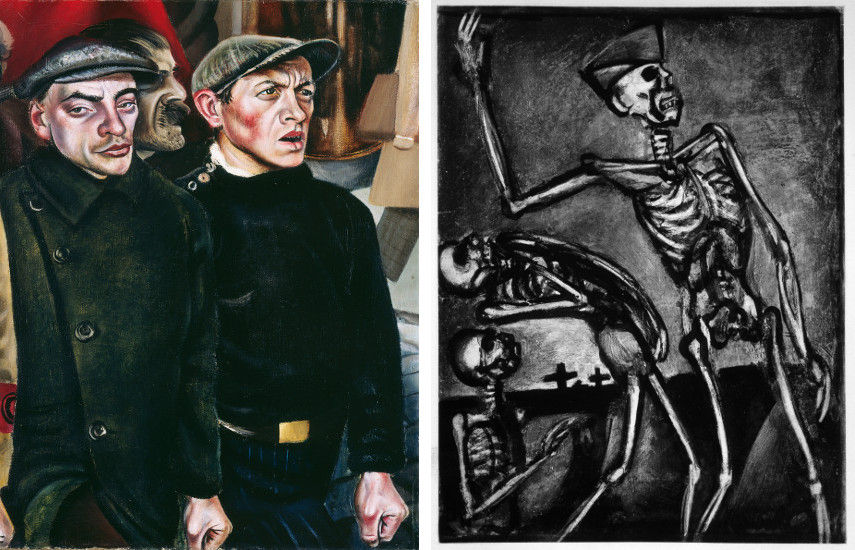[ad_1]
Coinciding with the one-hundredth anniversary of the World War One’s ending, Aftermath: Art in the Wake of World War One is an Tate Britain exhibition interested in examining the direct impact this bloody conflict had on contemporary and subsequent directions in British, German and French art.
As the first-ever show to study the culture of memorials alongside new developments in post-war art, Aftermath: Art in the Wake of World War One tries to answer the tough question of how artists responded to the physical and psychological scars left on Europe, one that could be felt long after history books closed their pages to WWI.

Artists Creating Under the Shadow of WWI
Interestingly enough, it appears that the First World War began to be constructed as memory almost as soon as it had begun. While the war was still raging on across the Old Continent, artists were already creating works that reflected on the conflict’s long-term impact.
Battlefield landscapes and images of soldiers’ graves were a frequent theme, spearheaded by artworks such as William Orpen’s A Grave in a Trench and Paul Jouve’s Tombe d’un soldat serbe a Kenali, both painted in 1917. Both of these paintings evoke silence and absence in the aftermath of a costly battle.
Artists like Käthe Kollwitz, André Mare and Charles Sargeant Jagger opted to turn towards sculptures in order to get their points across – they made sculptural memorials commemorating those who tragically lost their lives in the conflict.
Motifs of disabled veterans were a popular subject matter during this time. Works like George Grosz’s Grey Day from 1921 and Otto Dix’s Prostitute and Disabled War Veteran from 1923 both used imagery of disabled veterans to demonstrate the inequalities happening in the German society at the time. Of course, veterans were also an important part of the visual culture in France and Britain back then.
Aftermath | Trailer v2
Aftermath: Art in the Wake of World War One
Aftermath: Art in the Wake of World War One brings together over 150 works that were made between the years of 1916 and 1932. During this turbulent period, artists started to search for different imagery and new ways of making art, all with goals of responding to the experience of war and the newly established culture of remembrance.
Rebuilding cities and societies from the ground up also left a strong mark on this chapter of 20th-century art.
Besides underlining all of the above, the exhibition also shows how the post-war society and their ways inspired some artists to return to classicism and tradition while influencing others towards visions of a technological future in the modern city.
Ultimately, Aftermath: Art in the Wake of World War One traverses through different forms that WWI memorials took, highlighting their importance for social and political cohesion.

World War I Art Exhibition at Tate Britain
While WWI may have been the second bloodiest chapter in human history, this tumultuous period had an amazing impact on the world of art. It saw the birth of Dadaism and Surrealism, and led artists to new visual forms used to process experiences and memories of conflict.
Aftermath: Art in the Wake of World War One will be open for viewing until the 23rd of September 2018 at the Tate Britain in London, UK.
Featured images: Christopher Richard Wynne Nevinson – Paths of Glory, 1917. Oil paint on canvas © IWM (Art.IWM ART 518); William Roberts – The Dance Club (The Jazz Party), 1923. Oil paint on canvas, Leeds Museums and Galleries © Estate of John David Roberts. By permission of the Treasury Solicitor; Christopher Richard Wynne Nevinson – Ypres After the First Bombardment, 1916. Oil paint on canvas, Museums Sheffield; Paul Nash – Wire, 1918-9. Watercolor, chalk and ink on paper © IWM (Art.IWM ART 2705). All images courtesy of Tate Britain.
[ad_2]
Source link
